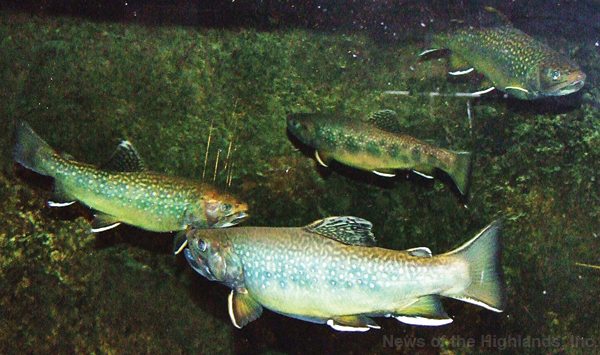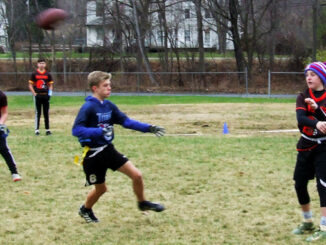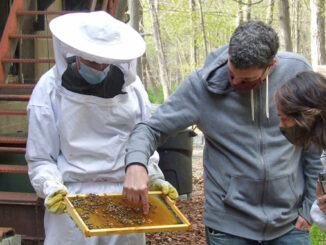
It was a big weekend for openings. Opening day for the new baseball season was Sunday, while the new fishing season launched on Saturday.
The weather wasn’t conducive for fishing on day one, but the Hudson Highlands Nature Museum offered an alternative. Michelle Mindicino provided a presentation on Brook Trout, at the Wildlife Education Center.
Mindicino started by asking the audience to identify parts of the trout, which is known as New York state’s official fish.
Trout have multiple fins which help them swim quickly through the water, steer, and propel themselves. The caudal fin (tail) helps propel the fish. The pectoral fin, located near the front, aids in steering. The large fin on top is known as the dorsal fin. Near the back, close to the caudal fin, is the adipose fin. Pelvic and anal fins are located on the bottom and allow the trout to swim quickly.
Gills are important because, like lungs, they pull oxygen from water rather than the air. Trout need to live in water with high oxygen content.
Eyes are located near the top of the head, allowing the trout to see predators and prey above them. Like humans, fish have a nose to help them smell. Trout use their nose to guide them back to the unique smell of home.
Trout also have a lateral line down the center of their body. Although it’s not an actual line, it is a secondary sensory organ which helps them feel and hear what’s going on around them.
To survive, trout need the perfect habitat. They need clear water without a lot of sediment as debris would make it hard to get around and breathe. Water must also be free of pollutants and toxins. They need water temperature to be below 50 degrees Fahrenheit otherwise they’ll get sick.
Since trout have small teeth, they tend to gulp their food whole, so small prey are preferred. As fingerlings, they enjoy insect larva and plankton. As they grow, trout will eat land insects, frogs, and even crayfish.
To conclude the presentation, the two dozen guests got to witness the museum’s resident trout being fed. The Black Rock Fish and Game Club provides young trout for educational purposes, but once they’re older, they’re returned to the wild. The process is supposed to help the population grow.



